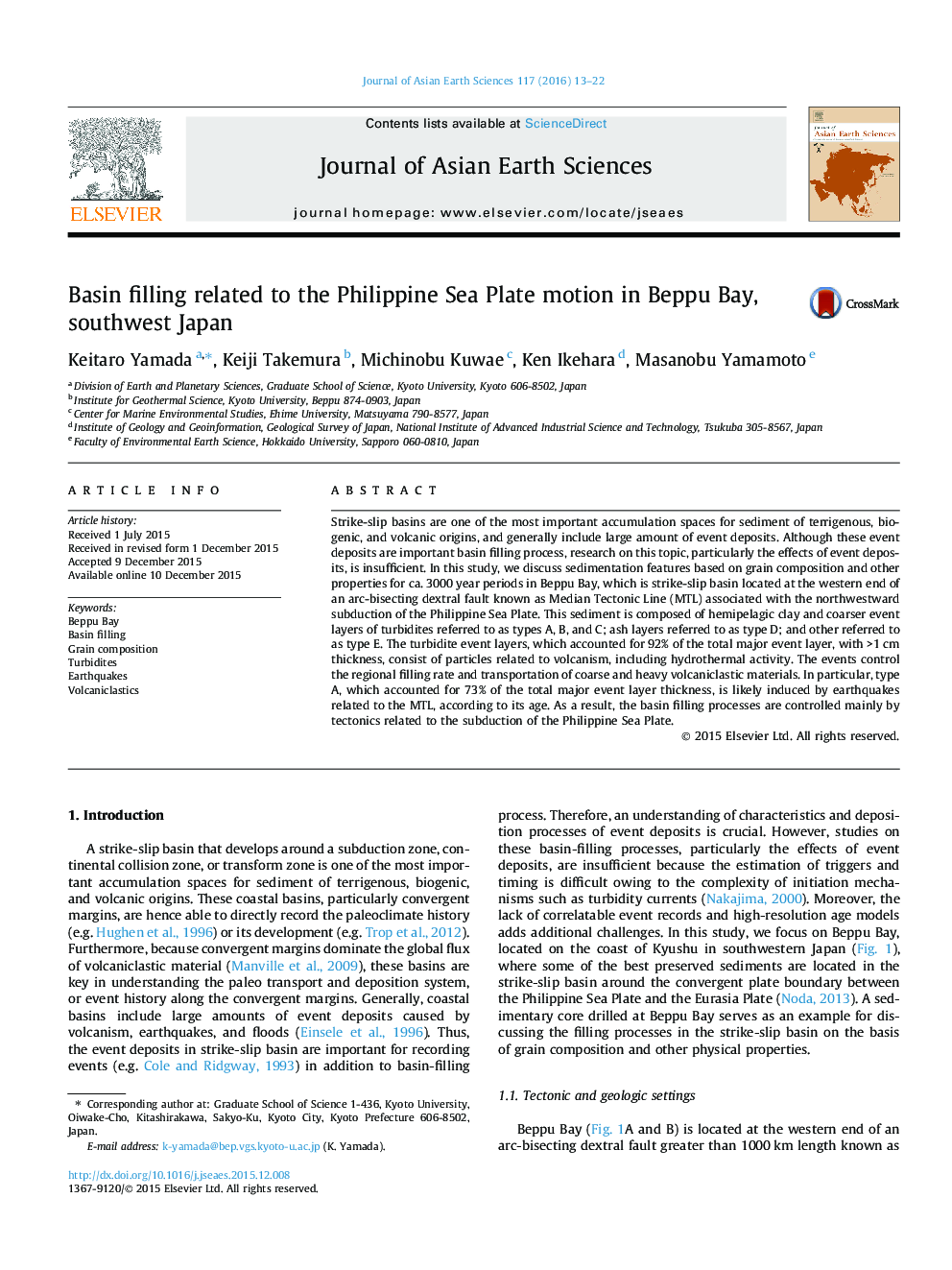| Article ID | Journal | Published Year | Pages | File Type |
|---|---|---|---|---|
| 4730171 | Journal of Asian Earth Sciences | 2016 | 10 Pages |
•We discussed the filling of a strike-slip basin on the basis of grain composition.•The filling sediments include abundant turbidites induced by arc-bisecting faults.•The basin filling is mainly controlled by tectonics related to the plate subduction.
Strike-slip basins are one of the most important accumulation spaces for sediment of terrigenous, biogenic, and volcanic origins, and generally include large amount of event deposits. Although these event deposits are important basin filling process, research on this topic, particularly the effects of event deposits, is insufficient. In this study, we discuss sedimentation features based on grain composition and other properties for ca. 3000 year periods in Beppu Bay, which is strike-slip basin located at the western end of an arc-bisecting dextral fault known as Median Tectonic Line (MTL) associated with the northwestward subduction of the Philippine Sea Plate. This sediment is composed of hemipelagic clay and coarser event layers of turbidites referred to as types A, B, and C; ash layers referred to as type D; and other referred to as type E. The turbidite event layers, which accounted for 92% of the total major event layer, with >1 cm thickness, consist of particles related to volcanism, including hydrothermal activity. The events control the regional filling rate and transportation of coarse and heavy volcaniclastic materials. In particular, type A, which accounted for 73% of the total major event layer thickness, is likely induced by earthquakes related to the MTL, according to its age. As a result, the basin filling processes are controlled mainly by tectonics related to the subduction of the Philippine Sea Plate.
